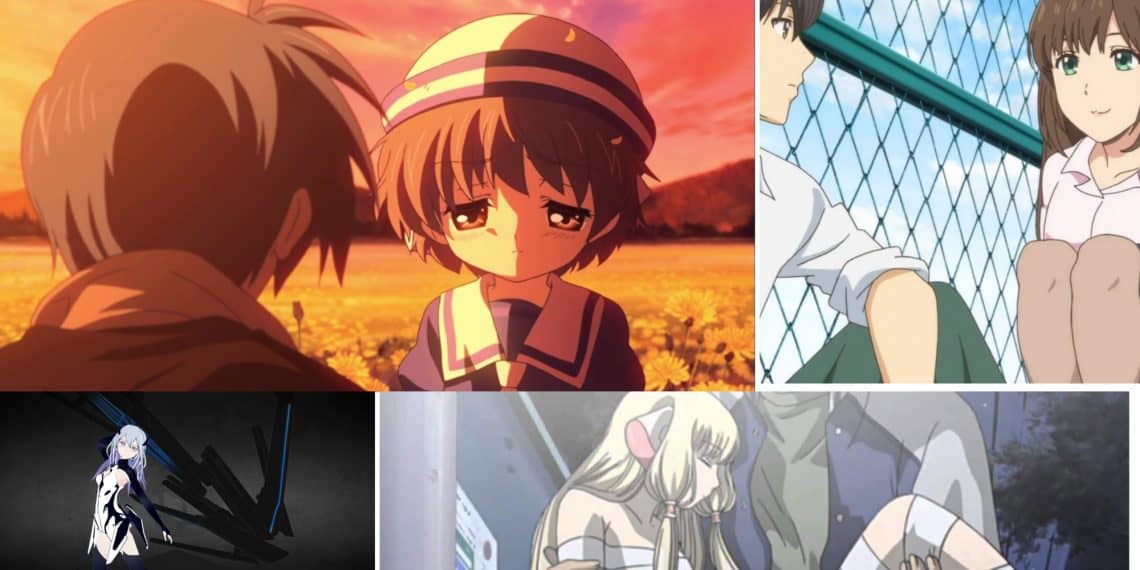Generally speaking, there is a romantic subplot in most animated shows. No matter the genre or focus of the narrative at hand, a love story is nearly always included. Love and happiness aren’t always achieved for the characters. In many stories, a secondary character has desired the protagonist all along but has kept their feelings to themselves.
Some people also struggle with unrequited love. This curated collection has everything for everyone looking for a light escape full of jokes and pleasant moments or someone seeking a more dramatic and emotional experience.
Love in these anime episodes comes in many forms, from high school sweethearts and magical affairs to eternal love and tales set on other planets. Because the studio only allowed so many episodes to be made or because the creator didn’t think far enough ahead, many anime love tales have a somewhat abrupt conclusion.
Whether you’ve never seen an anime before or have seen hundreds, you’re sure to appreciate these 15 tales. They have the power to move people on many levels: humorously, poignantly, and intellectually.
1. Toradora!
True love, as opposed to the cliche that claims love can overcome any obstacle, is the sort that knows the difference between a passing fancy and a lifetime commitment. Toradora! Anime has a sweet story that is written about school teens.
Many misunderstandings have arisen because of the use of the term “love triangle” or variations thereof to characterize this situation. Ryuji Takasu and Taiga Aisaka are both secretly in love with Minori Kushieda and Yusaku Kitamura, but none of them has the courage to tell the other.
Despite their animosity, Ryuji and Taiga have made a pact to introduce one another to their respective crushes. But as time goes on, feelings start to develop between Ryuji and Taiga.
The arcs don’t have clean divisions between them but instead blend into one another. There may be abrupt appearances and disappearances of individuals and locations, but it is always consistent with the overall narrative arc.
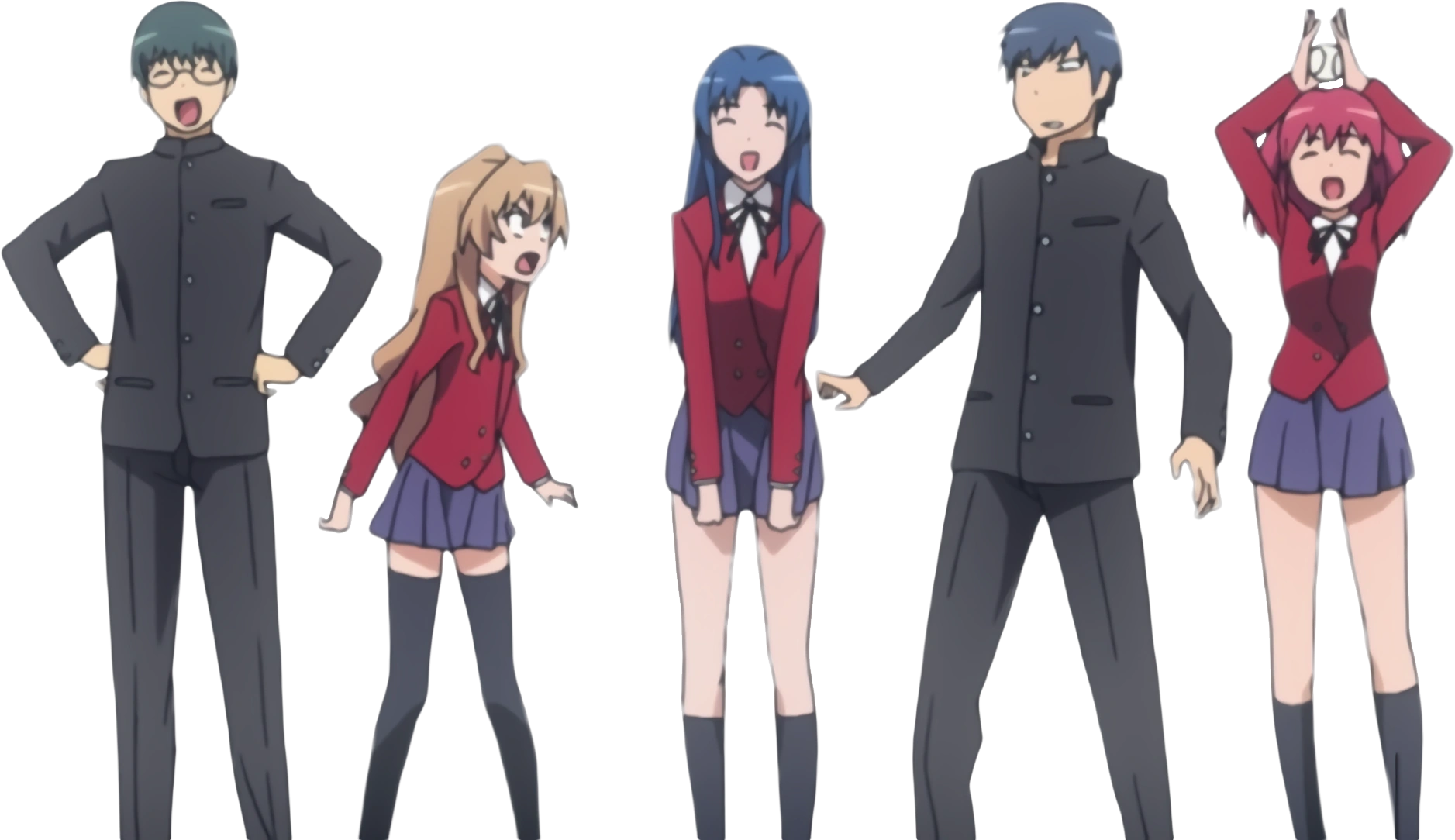
There aren’t any sudden leaps in time, and each arc of the plot is introduced gradually. They don’t begin and conclude with the debut and departure of a single arc character since they stick with the core cast throughout. The introduction of new characters usually merely speeds up the action.
The animation is great, but there is more that could be said about the visual style than what you would anticipate from a program airing in 2011. The animation is consistent with the characters’ established color schemes.
This being an anime, the characters all have outlandish hair colors, but the animation palette places an emphasis on various shades of red, pink, orange, green, and blue. These often represent one of the five major characters; however, this isn’t always the case, and occasionally, a different color scheme is used to provide a new perspective.
2. Kokoro Connect
The students in Kokoro Connect don’t have much in common at first, but they’re forced by events to bond more closely than would otherwise be the case.
In order to put these individuals into uncomfortable situations, the novel makes use of a supernatural power that appears as body swapping and other mysterious happenings. Similar to the classic film Freaky Friday, it has a character who swaps bodies with another.
When two individuals exchange bodies or minds due to a mystical force, chaos and comedy follow, but in the end, the protagonists get a deeper understanding of one another.
Expect tears and a promise to be together forever. The good news is that Kokoro Connect isn’t a breeze to set up. The body flipping is an intriguing story technique because it is so out of the ordinary, and the environment and character connections help to make that possible.
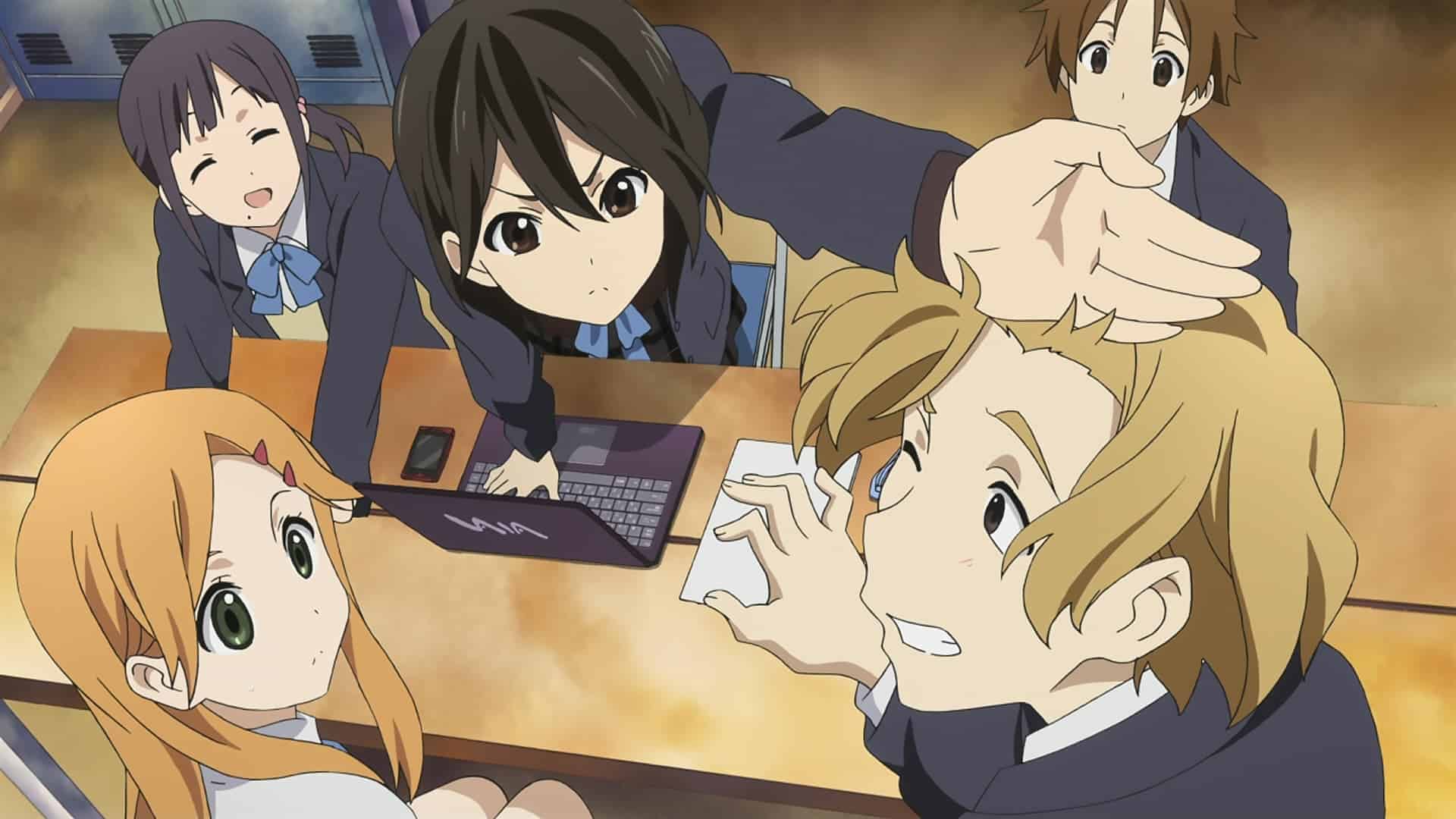
Several factors contribute to this result. The first is that you don’t need a third party to complete a transition. At least once, and with different personalities, everyone trades places. The timing and length of a transition may also be difficult to foresee, which can lead to awkward or even deadly circumstances.
This seems like it would be quite difficult to keep track of, yet the series does a great job of explaining each shift. Despite their originality, these features are emblematic of the series’ overall weak story framing. The way this series is structured prevents it from becoming a decent character-driven tale, which may irritate certain readers.
3. Nisekoi: False Love
The protagonist, Raku, is a young man whose father is the local Yakuza boss. He is polite, responsible around the house, and academically successful. Typical characteristics of female protagonists. Chitoge, a young woman whose father controls the local mafia, is the other primary figure. She has impressive physical abilities, a stunning appearance, and a tendency to be callous.
Typical characteristics of a masculine protagonist. So that the city doesn’t have to deal with the fallout, they’ve decided to pose as a couple for the sake of their respective families. The only problem is that they are totally incompatible with one another.
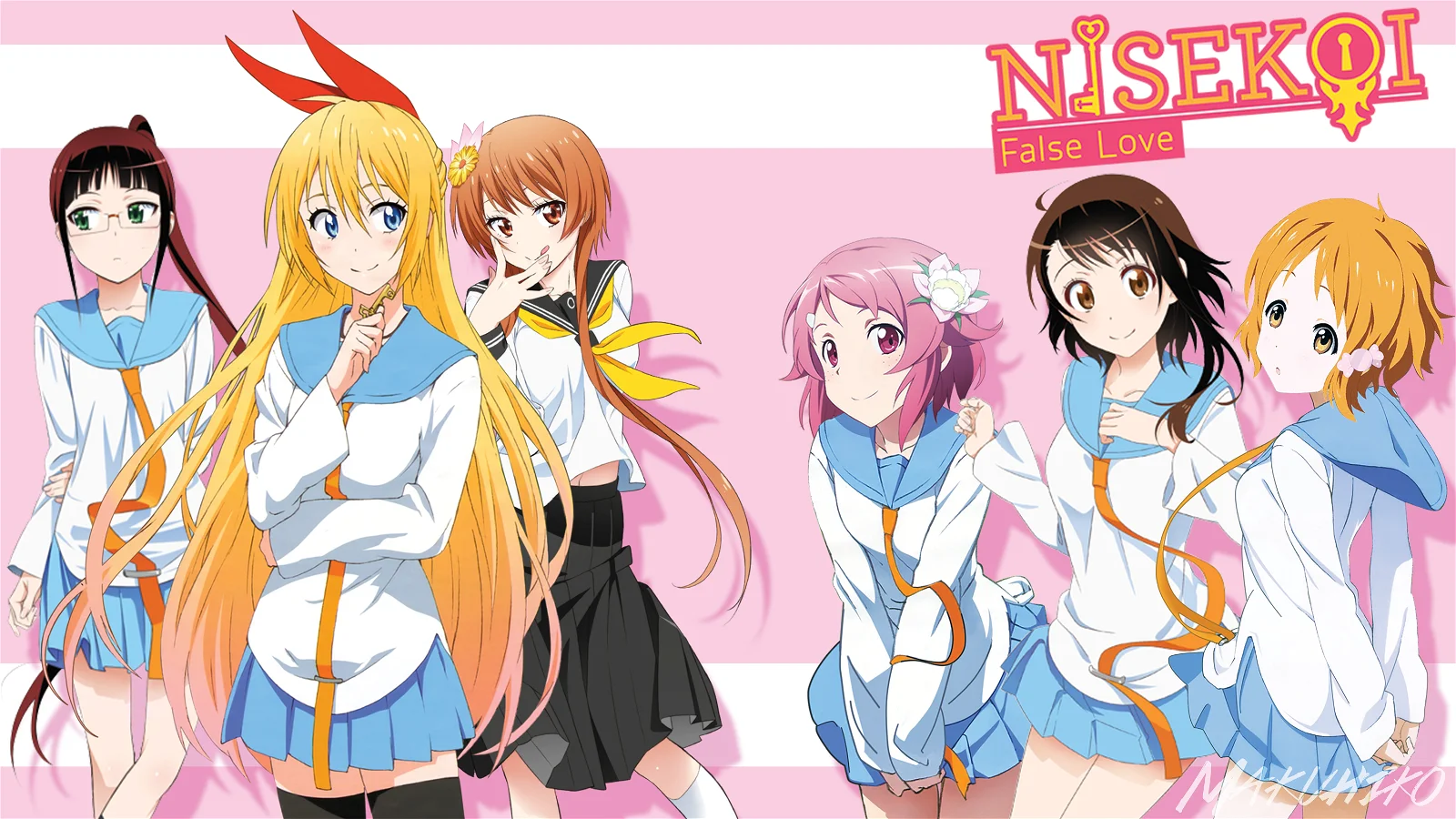
This dilemma ultimately becomes the most entertaining and engaging aspect of the narrative to watch, and it succeeds in keeping your attention throughout. Nisekoi’s selling point is how thoroughly the story’s central idea affects the lives of its heroes. It’s good for their families, but it has some negative effects on their social lives that nobody bargained for.
Raku is stuck in a fake relationship and can’t tell the girl he actually cares about since they’ve become the talk of the school. A typical romantic, Raku has no idea whether or not the woman he likes, Onodera, feels the same way about him. As other women fall in love with Raku and compete for his attention, Chitoge’s faked feelings for him are put to the test.
The events that follow, however, are not about competitiveness but rather the worth of genuine friendship. Having affection for Raku unites the cast because they realize they value the same things in a romantic partner. Raku may show off his generous side, which is the epitome of the adage that a good person would be kind to everyone without being asked to.
4. Fruits Basket
Tohru Honda, a high school senior, is all by herself after her mother’s untimely death. While walking to school one day, she stumbles into the home of Yuki Sohma, the “prince” of her high school. Soon, she and Yuki will move in with Kyo and Shigure, the two surviving Sohma family members.
Tohru soon discovers that the family curse involves the Chinese zodiac animals Yuki, Kyo, and Shigure and that they are all subject to transformation when touched by someone of another gender. Uo, an ex-Yankee, and Hana, a waves ESP girl, are Tohru’s two most opposite friends who complement her kind heart.
Tohru encounters various more cursed zodiac members as the narrative continues. There is a decent balance between new characters and established ones in the program. Tohru is also learning that the curse has a deeper secret. The surprising and heartbreaking revelation at the anime’s conclusion will have you in tears.
Aspects of Japanese culture, such as ancestor worship, are also discussed. Tohru and her friends often visit her mother’s grave, and she frequently addresses her mother’s portrait. Although we do things like this in our Christian society, in Japan, they have a far more profound spiritual significance.
While the Fruits Basket manga was running in serial form, an anime adaptation was being created. This occurs often, and it’s always disappointing since the anime has to end before the whole story is presented. If you like the anime, you should read the manga, which has 23 volumes.
5. Sayonara, Zetsubou-Sensei
Sayonara Zetsubo Sensei centers on a teacher named Nozomu Itoshiki, who has a pessimistic outlook on life. At the beginning of the series, he is discovered by Kafuka Fuura while he is about to hang himself from a tree; Fuura saves his life by intervening. It turns out that she is an optimist who can find the silver lining in any situation.
In each episode, we witness both Nozomu’s negative and Kafuka’s hopeful interpretations of some facet of Japanese society or human nature. A wonderful cartoon parodying every facet of Japanese culture was the result.
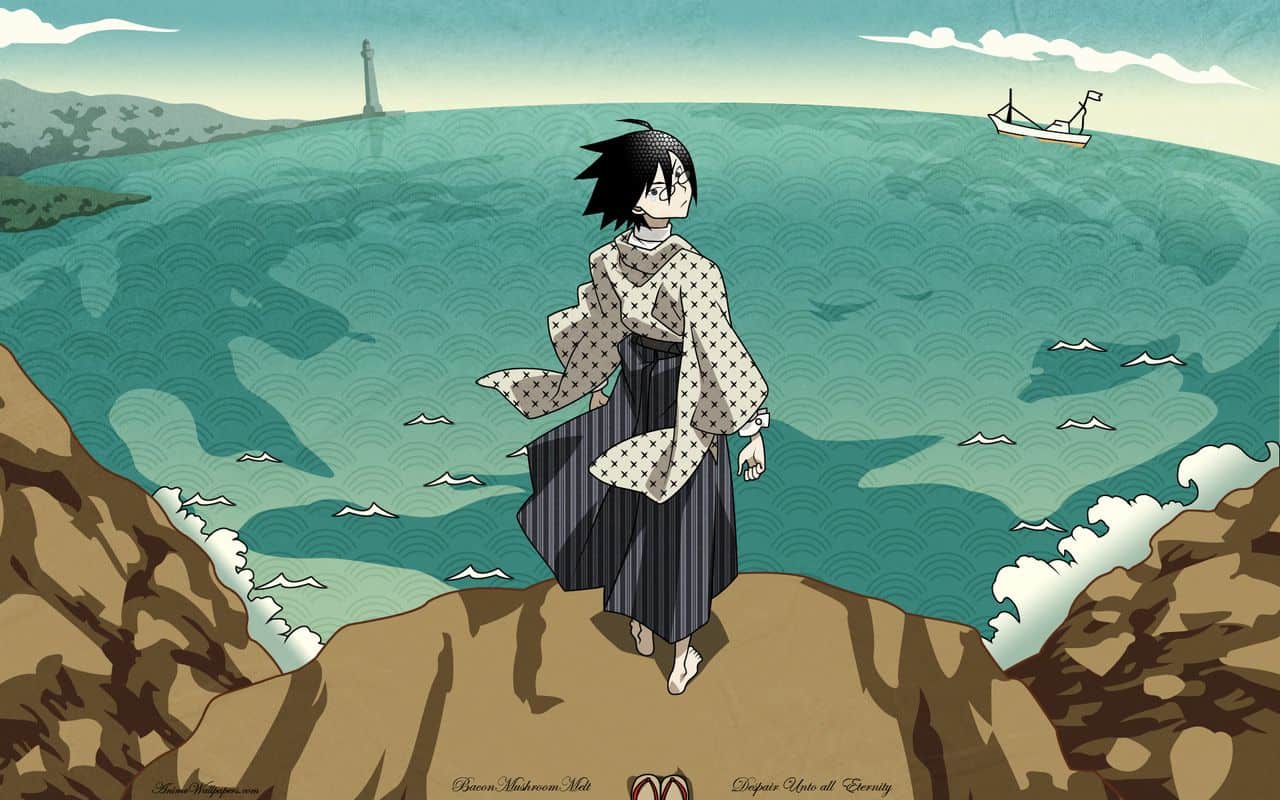
Itoshiki-sensei and his pupils are introduced thoroughly throughout the whole of this first book. There is a chapter dedicated to each student, highlighting her own variety of crazy and the ways in which the instructor “deals” with it. This is an excellent first book since it establishes the characters and their relationships clearly.
One of my favorites is the silent student who can dish out insults like a pro via text message. Then there’s Pollyanna-like Kafuka, who always sees the sunny side of everything, but you and she can have quite different ideas of what that means. Similarly, this series follows a similar pattern. The fact that the books were published first is irrelevant. The animation is fantastic, full of irony and silliness, and moves at the perfect pace.
6. Golden Time
Banri Tada is starting a new life as a law student in Tokyo, more than a year after he was gravely wounded in a bridge accident. Banri, as a consequence, lost all memories of his childhood, relatives, and friends, as well as the tragic event itself. Their Banri meets the elegant Koko Kaga on the day of the admittance ceremony, and the two hit it off right away.
She is hopelessly in love with Mitsuo; despite his best efforts to avoid her, she attends the same law school as he did. Koko is not the kind of woman to give up when the complications of university life arise. The series had a cast of interesting, fully realized characters who stood out and fit seamlessly into the narrative.
Koko is a character I never expected to like since she seems like such a snooty girl at first, but her complexity is shown as the story progresses. The events of Golden Time are more than simply an anime; they provide a window into Tada Banri’s real-life struggles.
Banri has retrograde amnesia after an accident. Soon after graduating from high school, he erased all of his memories from before that time. As an incoming freshman at a Tokyo law school, Banri tries to put his rough past behind him by making new friends and falling passionately in affection with a lady he has just met.
7. The Pet Girl of Sakurasou
Sorata Kanda can’t wait to get out of Sakura Hall. He was kicked out of his regular dorm and sent to Sakura Hall, a place reserved for the school’s most unique and bright students since he kept a cat there without authorization. But it seems that Sorata has little skill whatsoever. He dabbles in the world of video game development.
At the start of the anime, the hostel counselor, Chihiro Sengoku, instructs Sorata to go pick up her relative, Mashiro Shiina, who is moving from England to a nearby school. As soon as he locates Mashiro, she poses an unusual but crucial inquiry.
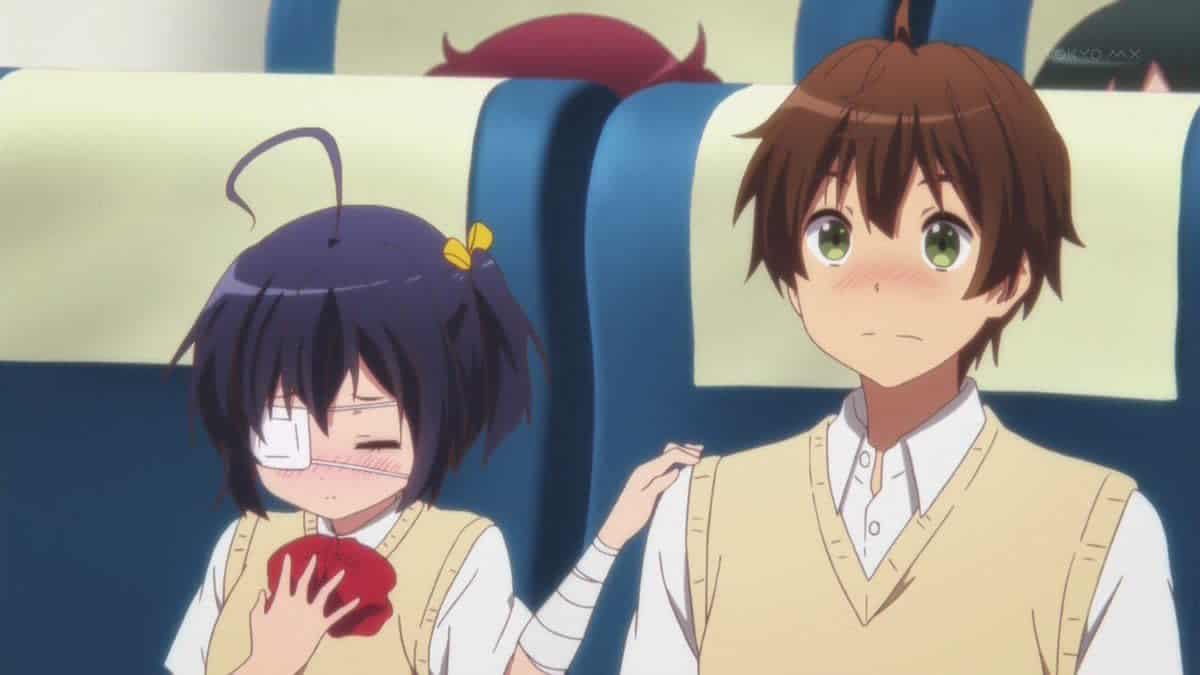
As Sorata returns Mashiro to his residence hall, he frets about whether or not Shiina thinks he’s as bonkers as the rest of Sakura Hall. That is, until the following day, when he discovers Shiina sleeping nude behind a desk covered by clothes and a room that appears as though a tornado ripped through it, destroying only her clothes.
There has never been anything quite like The Pet Girl of Sakurasou. Even the narrative in Heaven’s Memo Pad doesn’t compare to this one in terms of originality. It’s cool that they have so much power, and it makes us wonder what would happen if we did.
The Pet Girl of Sakurasou addresses a critical issue facing the creative sector: a lack of available talent. There is a clear disparity between individuals born with natural abilities and those who must work hard to develop their skills.
8. Domestic Girlfriend
Domestic Girlfriend was produced by one of the famous producers, Toshihiro Maeda. High school senior Natsuo Fujii aspires to be a writer. He has a crush on Hina Tachibana. After Rui Tachibana asks him to sneak out of the party with her, he slaps her despite his best attempts to conceal his true emotions.
Natsuo’s dad eventually reveals that he intends to remarry, and his new bride will be the mother of Rui and Hina. Natsuo has a tough time processing his emotions after that, especially those he feels for Hina. He spends time with the reading group before reiterating his desire to be with Hina.
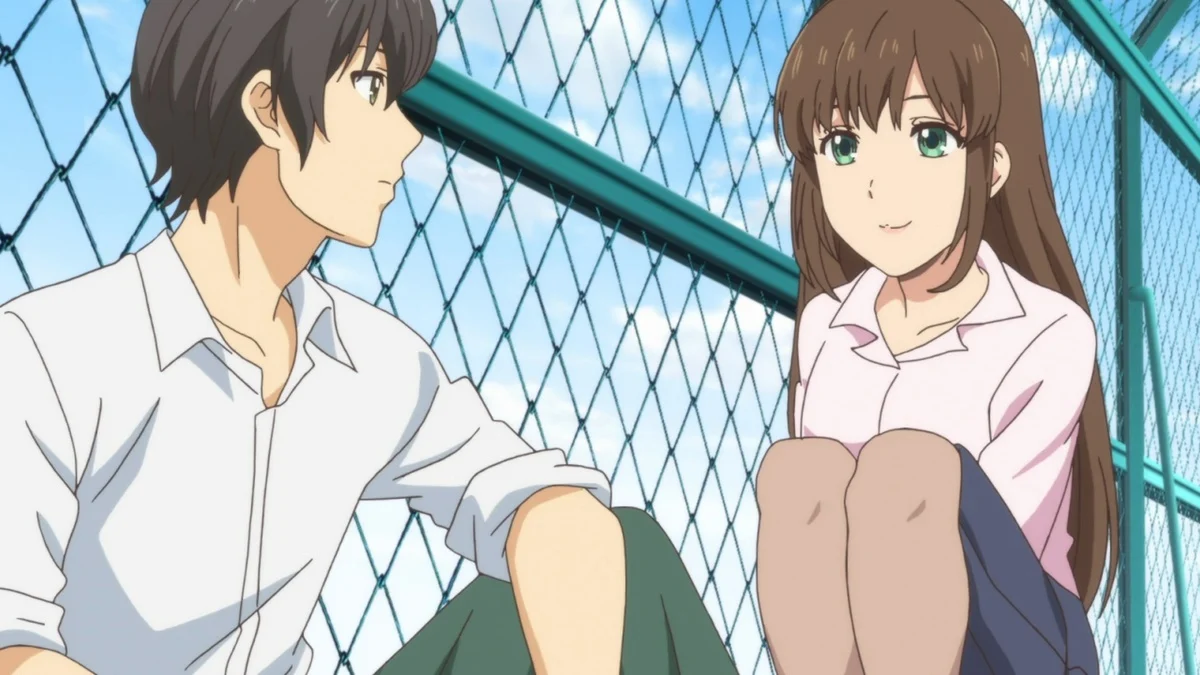
When the connection is discovered, Hina decides to transfer to a new school in order to start over in peace. After suffering a devastating loss, Natsuo pours his emotions into writing and wins a literary award for his work. Without Hina’s interference, Rui confesses her love for Natsuo and gives him permission to reciprocate her sentiments. In short, this is what happens in Domestic na Kanojo, a show that turned out to be a surprise.
All of these ideas, including cheating, unrequited love, and the risks of getting involved in things you don’t understand, are connected to the unstable but determined nature of love. Natsuo’s resolve to court Hina is admirable, and even though there are times when he wants to leave her, he stays committed to her no matter what.
9. Mysterious Girlfriend X
The strange Mikoto Urabe finds his existence by tossing him the most peculiar curve ball ever when he moves into Akira Tsubaki’s class. You could say that Urabe is an aberrant loner who sleeps on her working surface, carries knives around in her underwear, and laughs out loud at random, but Tsubaki can’t quite put his finger on it.
Until he sticks his finger in it by mistake. At that point, “sharing spit with a girl” means something completely different! As far as Tsubaki is concerned, he is just like any other high school student. Even though Tsubaki’s family just consists of his father and older sister, who behaves like a mother to the boy as his actual mother died at an early age, they manage to get by.
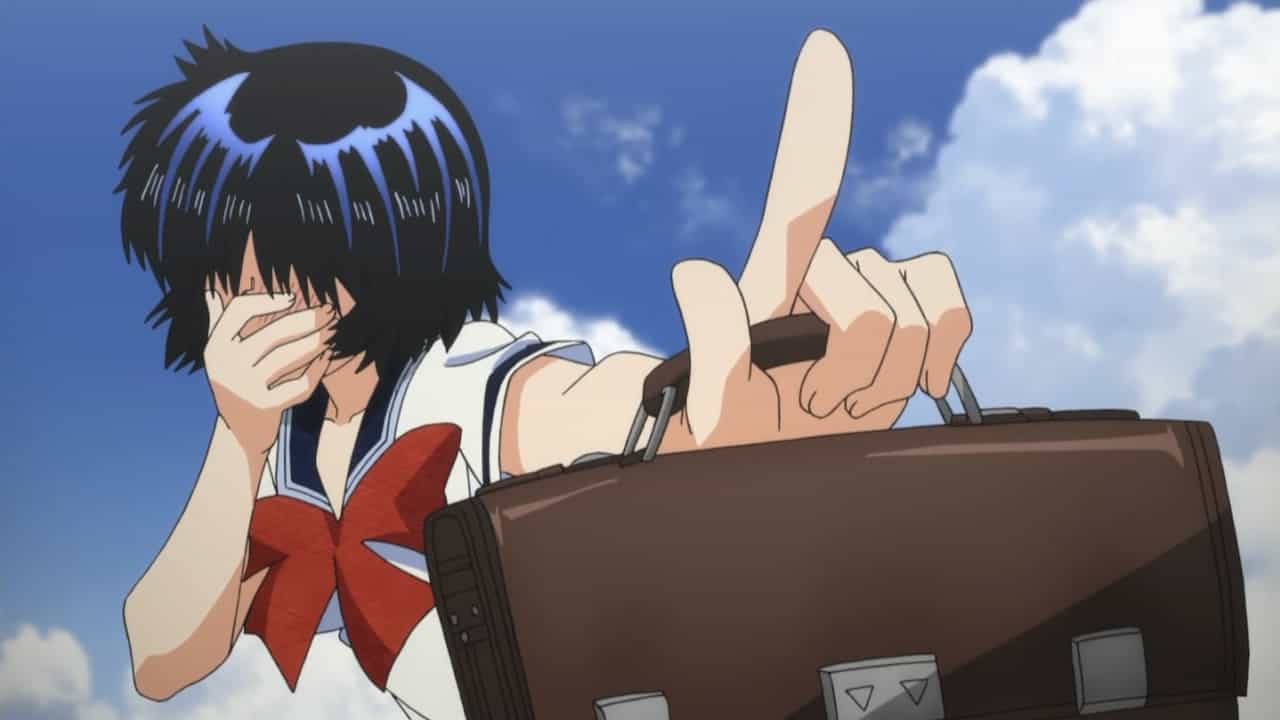
Tsubaki has turned out quite normal, enjoying his days spent around with his best friend, Ueno. But one day, a new student named Urabe enrolls in his class. Her peculiarity is through the roof. She shies away from developing friends and instead maintains a distance from everyone she meets. She constantly covers her icy expression with her bangs.
She often skips lunch and dozes off during other breaks as well. Tsubaki, on the other hand, can’t seem to avoid being wooed by her. When he goes back to class to fetch something he forgot, he discovers that she is still there, sound asleep. She leaves without saying anything, but he notices the puddle of drool on her desk as she walks away.
10. Hatsukoi Limited
Hatsukoi Limited develops into a full-fledged series because of its focus on first love, school life, and the joy of being young. The story follows eight girls from middle school through college as they find love, navigate their own unique struggles, and learn what it means to really love another person.
The storylines are interconnected, and the characters learn more about one another as the series progresses, even if the emphasis seems to move from character to character and interest to interest in each episode. Additionally, the story’s stock characters are generic enough to provide some comic relief without distracting from the story’s overall message.
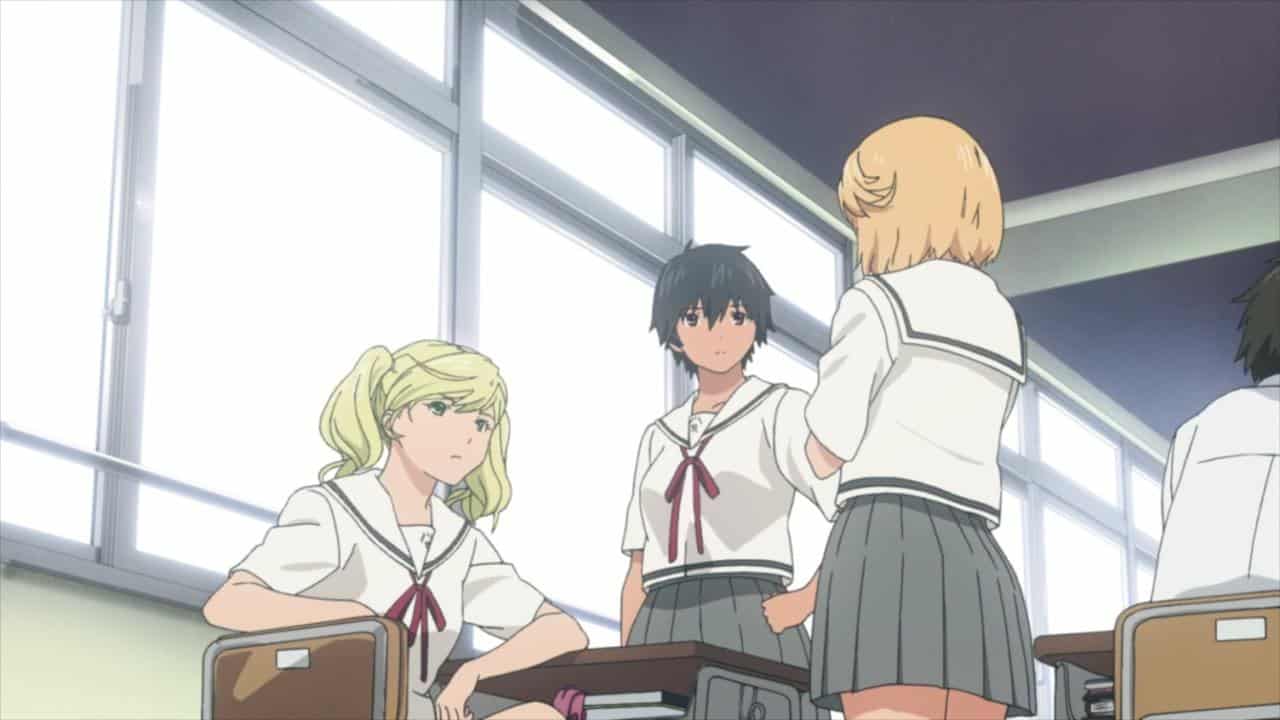
Like in School Rumble, there’s amusement in the fact that everyone’s in love with the wrong person or is too sentimental and emotionally invested in the wrong person. Strong writing, excellent execution, and a sense of security combine to make Hatsukoi a rewarding experience for readers of all backgrounds.
The show’s emphasis on its characters has been implied but never explicitly acknowledged. While not technically a slice-of-life game, the interplay and banter between characters give the impression that it is. Having direct experience is far more powerful than just hearing about it.
They all have their charms, and although they may sometimes fall into certain stereotypes, they never do so consistently—at least the vast majority of them. In a refreshing departure from the norm for romance novels, the protagonists in this series really undergo some development, although a subtle one. In my opinion, the voice actors did an excellent job and were a good fit for their characters.
11. Orange
Takamiya, in the middle of her second year of high school, receives a letter from her future self, written from Naho’s viewpoint ten years in the future. If the letter’s predictions come true, Naho’s biggest future regret would be that she couldn’t stop her classmate and friend, Narusue Kakeru, from killing herself. They have banded together to save Kakeru from the fate Naho predicted for him.
Since Naho and his pals are the protagonists, it makes sense that Orange focuses nearly entirely on them as they go about their everyday lives and interact with one another. The story’s three main protagonists are Naho, Kakeru, and Suwa, while Hagita, Azusa, and Takako are more like supporting characters.

When all of Naho’s buddies are together, they have amazing chemistry, but on their own, they’re very dull. There’s Suwa, the extrovert; Azusa, the exuberant; Hagita, the eccentric; and Takako, the serious adult. Orange builds on these foundational features to deepen their interdependencies but falls short in other respects. Despite his more dramatic tendencies, Kakeru’s demeanor isn’t that unlike his pals’.
Naho, our protagonist, is the story’s most important figure because of who she is. She is a great person because of her kindness and readiness to put the needs of others ahead of her own. Despite her lack of advantages, her genuine personality quickly becomes apparent.
12. Chobits
Chobit’s plot revolves around humanoid robots. Persocoms are computers programmed to act like humans, which might be useful in a variety of contexts. Hideki Motosuwa is a young man who has decided to attend a prestigious metropolitan prep institution. Hideki finds out about persocoms and has a strong desire for one, but he is presently unable to afford one.
Thankfully, Hideki finds a persocom in the trash and brings her home. When he turns her on, he discovers that the only word she can say is “Chii,” so he gives her that name. While taking care of Chii completely turns Hideki’s life upside down, Chi’s gradual understanding and a number of comical events serve to break up the change.
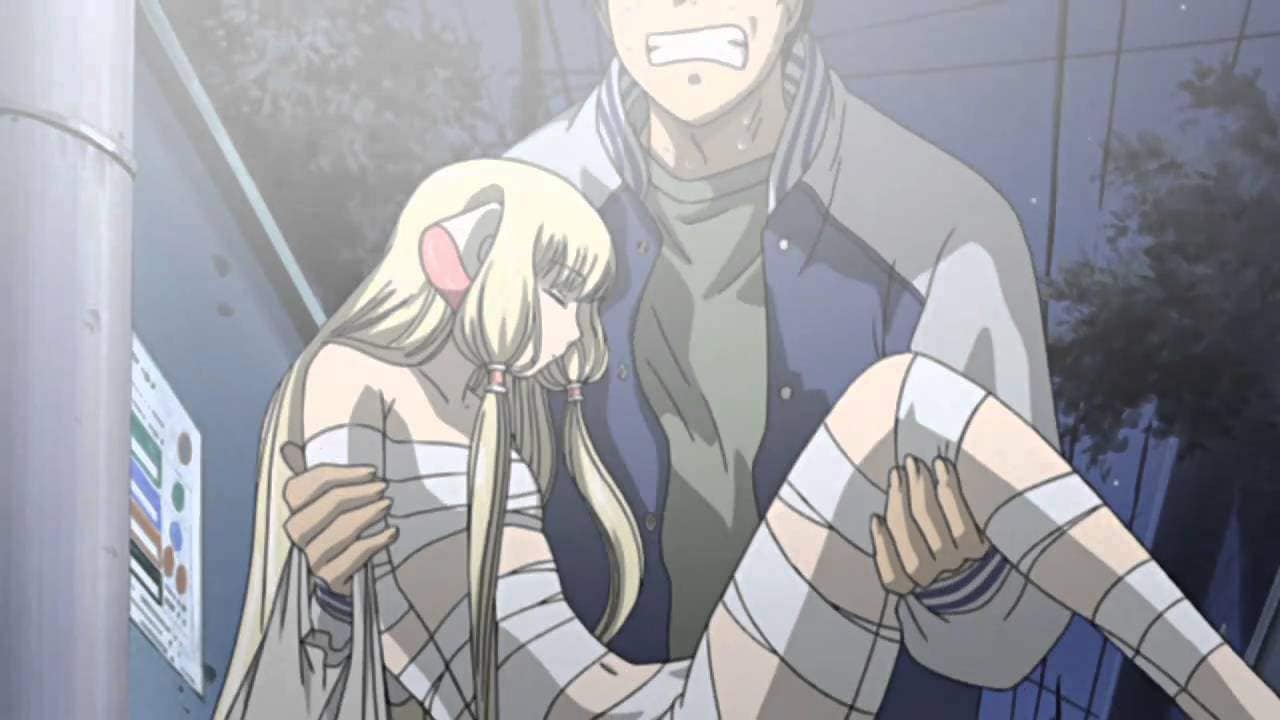
But the mystery of Chii’s origin and the nature of her differences from other Persocoms remains, and as more of the answers surface, Hideki and his loved ones are faced with new challenges brought on by daily life in a society made up completely of Persocoms.
The charismatic on-screen personas of the Chobits’ cast members are a major factor in the show’s popularity. Hideki is a really simple and unremarkable person, yet despite this, he still manages to win over the hearts of those around him. Even though Hideki isn’t as engaging as some of the other supporting characters who have their own arcs, he serves as a fine protagonist for this story.
13. Clannad
The story’s setup is straightforward. Tomoya Okazaki is a rebellious youth who despises his hometown and the high school he is compelled to attend. On the way to school, he overhears a little girl murmuring to herself. Nagisa Furukawa, as she tells Tomoya when they meet, wants to bring back the Theatre Club.
Since they have nothing better to do, Tomoya, his friend Sunohara, and the four girls they meet on the way decide to revive the Theatre Club. Many fans consider the first season to be the weaker of the two. Because of its origins as a visual novel, Clannad is often seen as the lesser of the two.
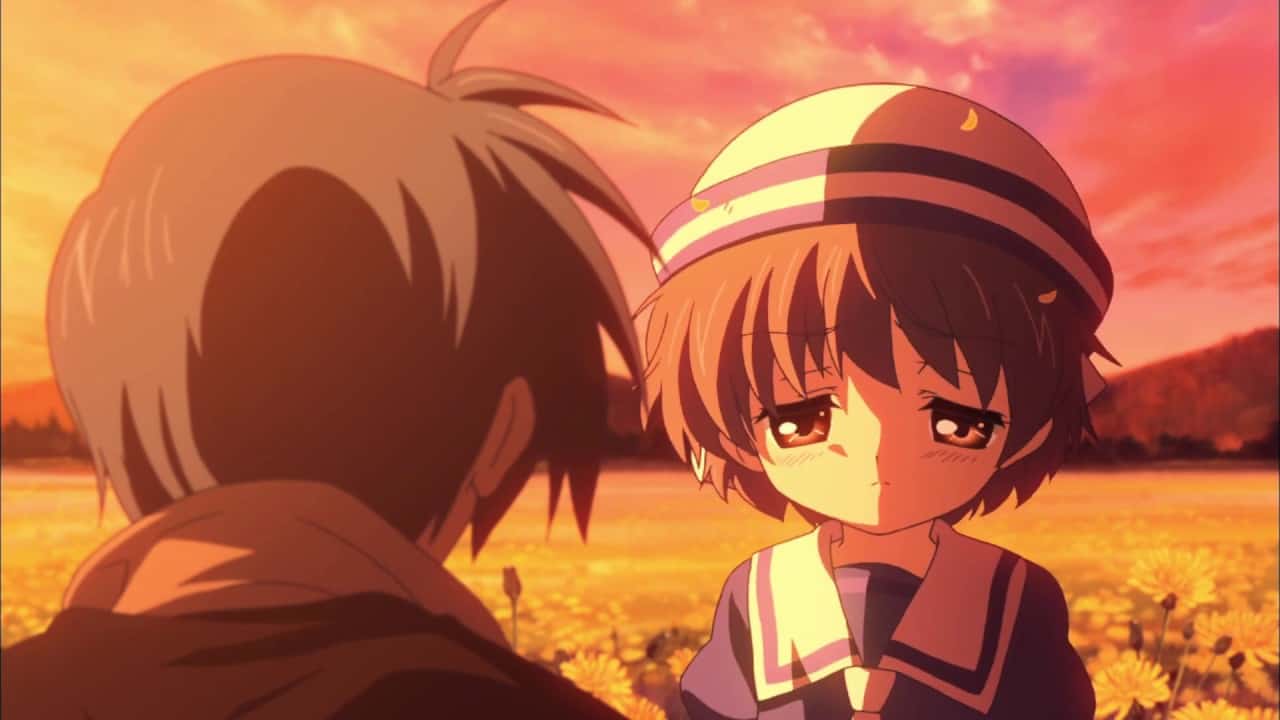
Although the scenario described above is the driving force of the film, it is mostly ignored in favor of the unique arcs of the film’s four female characters. For the uninitiated, a visual novel is an interactive story in which the user makes decisions from among many possible outcomes. This includes many potential romance arcs for Clannad’s female heroes.
You may either weave the character arcs into the main tale and use them to advance the storyline, or you can entirely deviate from the main plot and devote many episodes to each character arc. Clannad exploits both to great effect, but this lack of concentration prevents the story from coming to a satisfactory end.
After watching both Clannad and After Story, I can see why people are so fond of this series after Story’s second act is universally hailed as a masterpiece, with a very moving message about the value of family at its heart. However, in order to get to the last two arcs, you have to slog through a whole season and a half of a middling slice of life.
14. Beatless
The events in Beatless take place in a dystopian future when artificial intelligence units known as hIEs are widespread in society, performing both menial and deadly tasks as humans steadily lose their grip on the planet to the onslaught of automation.
Here, our protagonist, Arato Endo, meets Lacia, one of five exceptional units that have escaped from a secret facility, and takes her under his wing to help pave the road for the future of mankind.
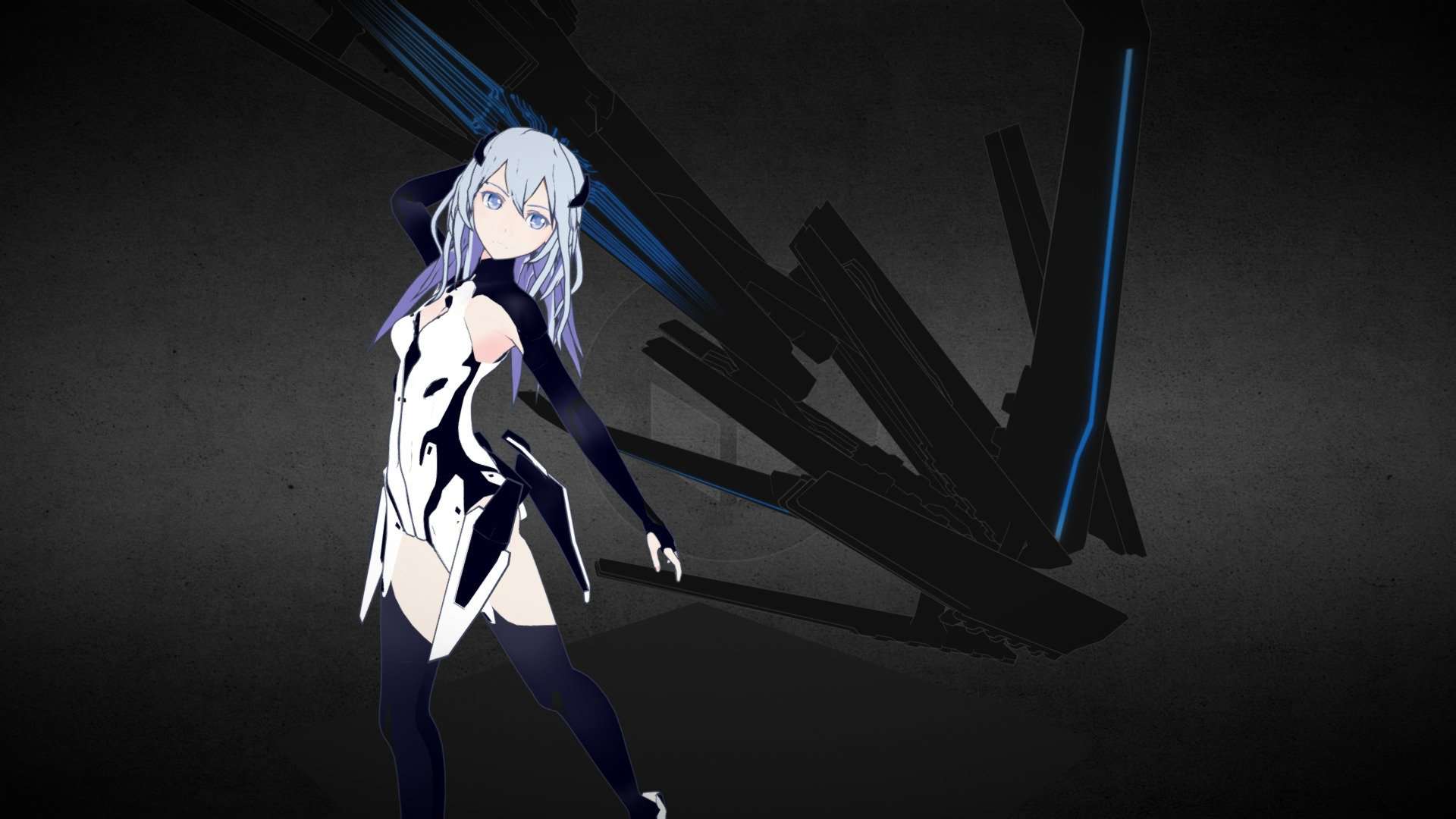
Beatless is apparently a program that deals with the issues of artificial intelligence (AI) and the future of mankind from diverse angles. Considering the potential implications of that line, however, the resulting episode is perhaps one of the least well-structured in the history of anime.
An overview of the show’s premise is provided in the pilot episode, but subsequent episodes become increasingly confusing as characters stand or sit around for ten minutes at a time infodumping an overwhelming amount of information that the average viewer will find either irrelevant or uninteresting.
It doesn’t help that the anime sometimes jumps about in time, leaving viewers wondering about their favorite characters’ motives before suddenly moving focus to something different in the following episode. No one watching will even know the difference.
15. Sankarea
The story of Sankarea: Undying Love follows Chihiro Furuya, the son of a temple priest, as he meets Rea Sanka, the favored daughter of the Sanka family. However, this anime love story has an unexpected twist: Chihiro has a thing for zombies and will only date zombie chicks.
It seems impossible, but when Chihiro’s cat, Babu, dies, he uses a book he obtained to create a reviving potion, resulting in him meeting Rea, who is contemplating suicide as a means of escaping her agony. After Rea’s accidental death, she takes some of the revival potion intended for Babu and becomes a zombie.
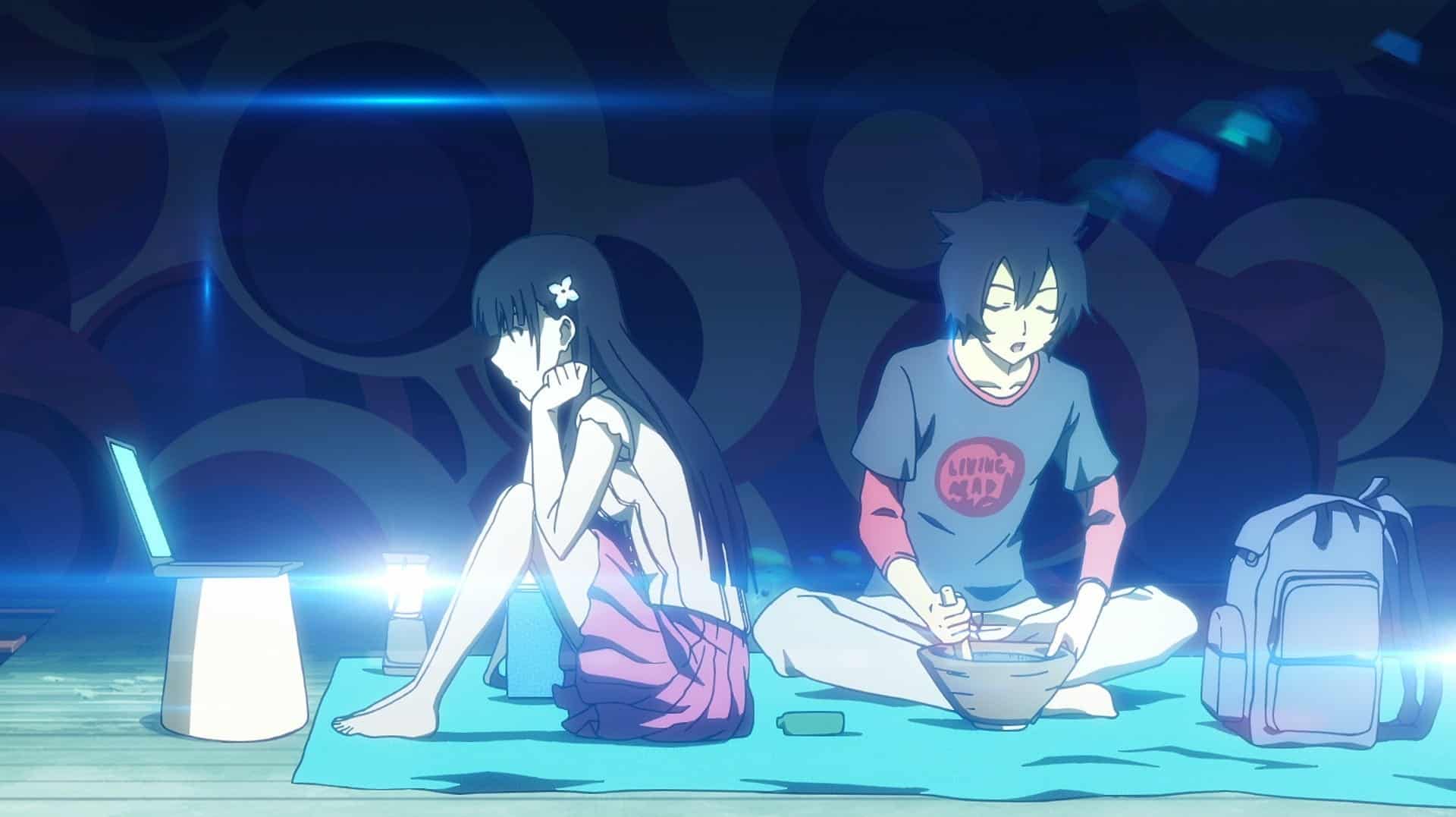
Sankarea’s portrayal of this ‘fatherly affection’ is uncomfortable to witness since it’s clear that there’s more going on than meets the eye when it comes to Rea’s dad. It’s understandable why Rea thought suicide was her only option.
The fact that Rea’s father was a powerful man-made everything much worse since it seemed like she had no choice but to end her life. In actuality, Rea’s father uprooted her and her family and sent away her sole true friend and confidante.
Everything seemed so nonchalant and carefree. What exactly are we trying to convey if we demonstrate that death is preferable to life? Furthermore, the unedited nature of the anime means that it may include elements that are inappropriate for younger viewers.


